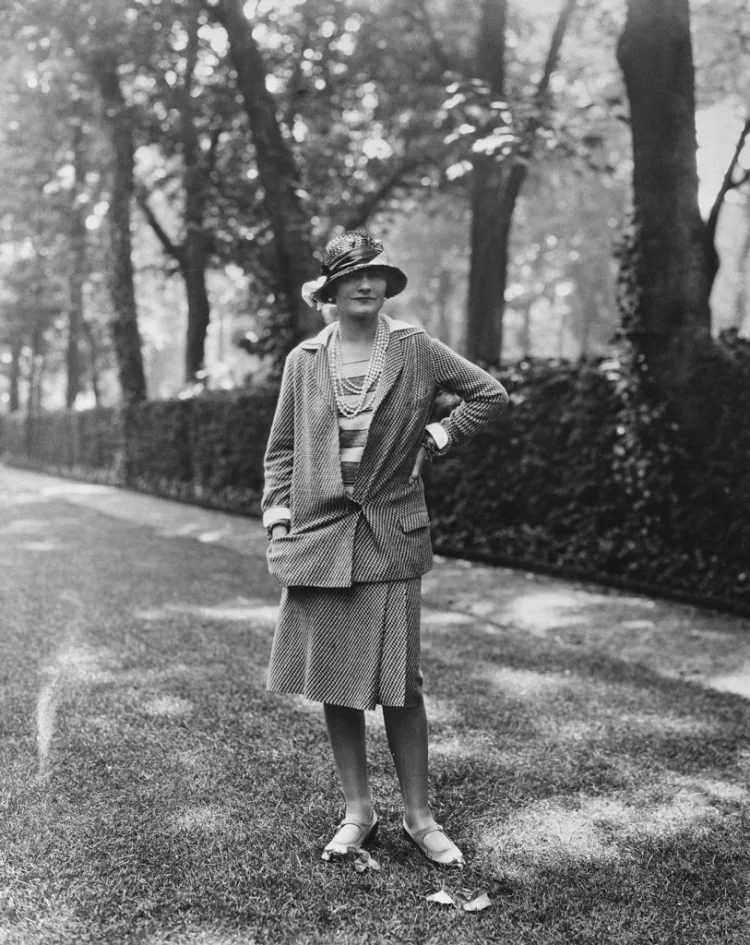Travel in Coco Chanel’s Cap-toe-pump Footsteps? Oui, Please.
From Chanel's first Deauville boutique, to the place that inspired the interlocking C logo, to the rose fields that create Chanel No.5, see it all.

There is something distinctly chic about traveling France the way Coco Chanel lived it.
For many, the idea of seeing what she saw and perhaps feeling what she felt as she created one of the most legendary maisons is the stuff fashion fantasies are made of.
And while the Chanel allure may have seen tickets to the exhibition “Gabrielle Chanel. Fashion Manifesto” — currently at the Victoria & Albert museum in London — sell out less than a week into the installation’s more than four-month run, those still keen to walk in Coco’s footsteps quite literally can.
A new curated itinerary from luxury travel company Red Savannah invites clients to channel their inner Coco as they explore France in a way they’ve perhaps never seen it. The experience, as Camilla Davidson, the company’s head of destination management for Northern Europe who dreamed up the idea, sees it, “is for those who are passionate about the design house and who want to go beneath the surface of the boutiques they’re already familiar with.” It’s also for anyone who simply loves great design and history, she says.
The scenes: strolling Deauville past Art Deco beach huts and the site of the first Chanel boutique, scoping the stained glass that inspired her interlocking Cs at a chateau where she summered, or sipping tea at her favorite café.
It’s a weeklong adventure that begins in Normandy. Guests are greeted at Charles de Gaulle Airport and escorted through the countryside to Deauville, France’s seaside resort town where Parisian high society mingle in the summer months and where Chanel opened her first shop in 1913. When she wasn’t conceiving of a beach-chic meets comfort aesthetic that hadn’t been afforded to women before, she’d be at the Clairefontaine racecourse, which guests can opt to do, too. It’s a Royal Ascot sort of social setting that, as Davidson says, “remains largely unchanged since the time Chanel was attending with [Arthur] ‘Boy’ Capel, who was her great love in the 1920s.”

Then it’s on to the City of Lights and a stay at the Hotel Castille Paris, right near the original Paris Chanel boutique at 31 Rue Cambon, the address inscribed on many a vintage jewelry piece. Those so inclined can shop the latest collection and follow their retail therapy with a visit to the Musée des Arts Decoratif to see pieces from the past before stopping for tea at Café Angelina, where Coco was a regular. For the truly dedicated, there’s an upgrade option in the fully customizable itinerary that includes a stay in the Suite Coco Chanel at the Ritz Paris, where the designer herself called home for more than 30 years. Few may be able to say they can sleep where she slept.
The modern fashion set might frown on pairing a beret with the latest tweed look, but the French staple was a favorite of Chanel’s. Those interested in the upgrade can visit the last traditional beret-maker in France, which quite possibly made those the designer herself donned throughout her life.
“She very much believed that you don’t have to wear the most luxurious fabrics and that simplicity in women’s dress is really the key to freedom. That’s why she championed the fisherman’s sweater with the blue and white stripes and why she championed the use of jersey. Similarly, the beret — it’s traditional and it was never considered something that high society could wear. But she was democratizing fashion so that women could be free in what they wore. The beret is very pertinent thematically and that house does have very strong connections with Chanel,” Davidson says.
The “In the Footsteps of Coco Chanel” itinerary winds down in the French Riviera at the Château de Crémat, where the designer was a frequent guest. It’s there, in the stained glass of the windows, that the interlocking Cs — now inextricably linked to Coco and her fashion house — appear. But it wouldn’t be the first time Chanel encountered the connected letters that would become her signature symbol.
“There are some really interesting parallels throughout Chanel’s life where the interlocking Cs become really apparent,” Davidson says. They first appear in the stained glass of the abbey at Aubazine where Chanel was raised after her mother died, then at Château de Crémat, which was near her Riviera home, La Pausa. “You start to think there must be a through line here or a narrative that inspired her to see this logo.” (A salacious aside? London lampposts are rumored to feature the interlocking Cs because she was cozy with the Duke of Westminster at the time of their installation and he placed them there as a nod to their love.)
On the final day in Chanel’s Riviera, things end on a fragrant note with an air of jazz, which ruled the day in the 1920s when Chanel could have easily been rubbing elbows with F. Scott Fitzgerald and his wife Zelda. Guests have the opportunity to visit the Chanel-owned rose fields in Grasse whose product produces the defining note in Chanel No.5. In the evening, it’s live jazz at Bar Fitzgerald at the Belles Rives.
“Gabrielle Chanel. Fashion Manifesto,” which is the first retrospective in the U.K. entirely devoted to Gabrielle Chanel’s work, was the catalyst for Davidson’s designer itinerary. The exhibit, she says, “is a testament to her as a woman, as an inspiring female founder, as a business owner, and also to the amazing design legacy.” The itinerary is a way to get just a little bit closer to that legacy and to Coco even before she was Chanel.


 oujisama
oujisama 












